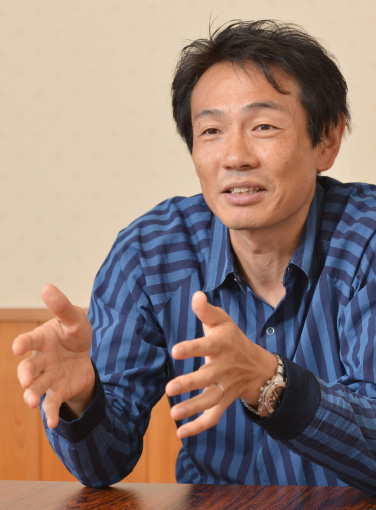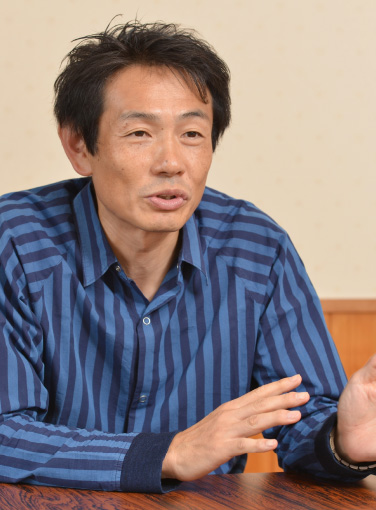Expectation about Deep-UV LED evolution
New opportunities for water purification technology development
Interest in Deep-UV LEDs, which exert a bactericidal effect, is increasing in the field of water purification. This is because UV LEDs bring more advantages to water purification systems than mercury lamps, which have been used for a long time as a source of water sterilization through Deep-UV light. Furthermore, the move to commercialize Deep-UV LEDs has spurred device manufacturers to become active, and the momentum for further development of water purification technology through light is also increasing. Professor Masahiro Otaki of Ochanomizu University, a leading expert in this field, spoke about new possibilities for water purification with Deep-UV LEDs.

Masahiro Otaki, Dr. Eng.
Ochanomizu University
Professor of Natural Sciences at the Institute of Advanced Industrial Science
Although it is an established theory that Deep-UV light with a wavelength of 300 nm or less is effective for inactivating pathogenic microorganisms in water, the technology required to use Deep-UV light for water disinfection began to attract a great deal of attention in Japan relatively recently ― around 2000.
The initial trigger was the occurrence of infections (severe diarrhea) caused by pathogenic microorganisms called Cryptosporidium in Milwaukee, Wisconsin, USA in 1993. Infectious diseases spread through the water supply, and about 400,000 people fell ill. An outbreak of infectious diseases caused by Cryptosporidium has occurred in many parts of the world, including the UK and Canada, and in Japan too; about 9,000 people in Saitama Prefecture's Ogose Town caught diseases due to water service infection occurred in 1996.
Technological development to inactivate Cryptosporidium accelerated at once as a countermeasure against these infections, with a massive outbreak occurring in the United States. Cryptosporidium is a relatively large microorganism, so it can be sufficiently removed by ordinary water treatment such as precipitation or filtration, but chlorine mixed in tap water as a disinfectant will not kill it. As a result, if something happens during the water purification process and Cryptosporidium residue are left in the water, chlorine does not work, causing infectious diseases to spread. Therefore, effective technology is needed against Cryptosporidium. Under these circumstances, around 2000 research has shown that Deep-UV light is effective in inactivating Cryptosporidium (Fig. 1). It is around this time that Deep-UV light was introduced into purification treatments in North America.
Fig. 1: Mechanism of Deep-UV LEDs killing pathogenic microorganisms

From mercury lamps to LEDs:
Practical use, faster than expected
I think it was around 2014 that LEDs started being actively used as a light source for water purification equipment using Deep-UV light. Since lighting equipment using high-brightness visible light LEDs was already in use in various places, the idea itself of using LEDs as a light source of water purification systems has been in existence for a long time. However, a Deep-UV LED with practical efficiency and long lifetime was not easily available. Still, I remember that Deep-UV LEDs were put into practical use faster than I thought. At that time, I was told from LED experts that it would take another 10 years for UV LEDs to be used at a practical level, but actually it took 2 to 3 years since then.
It was around 2016 that I started using Deep-UV LEDs for research. As a student, I have been involved in research on techniques for controlling light pathogenic microorganisms in water, and as a research on Deep-UV light, I am currently focusing on the "differences in light wavelength effects", "differences in microorganism species effects", "disinfection mechanisms", "actions other than disinfection" and other main themes. Until recently, only mercury lamps were deployed as light source of the equipment I used to conduct these studies. When I used LEDs instead, I noticed many advantages in my experiments.
For example, the time to obtain stable light after turning on the power is shorter. In the case of a mercury lamp, it took quite a while to stabilize. This advantage is very important when repeating the same experiment many times. In addition to making the light conditions identical, the time required for the experiment can be shortened (Fig. 2).
Fig. 2: Equipment for water sterilization experiment using Deep-UV LEDs

Innovative evolution in water purification:
Downsizing brings overwhelming advantages

I think that Deep-UV LEDs will continue to give several impacts not only on such experiments, but also on water purification systems already in use. For example, there is a possibility that the light source's lifetime could be lengthened by switching to LEDs. In water purification systems using mercury lamps, the light source lifetime is about 1 year, after which it must be replaced. Reducing this replacement frequency with a longer life span decreases the maintenance load and maintenance cost of purification equipment. Many water purification systems are continuously operating for a long time; as a result, reducing maintenance efforts and cost would be a great advantage to users.
Concerning light source downsizing, LEDs are remarkably advantageous over mercury lamps. This features bring great potential also to water purification systems; this is because of the increased flexibility in designing where the light source is attached. Optimizing light source placement according to the purification system structure becomes possible. In the case of a light purification system, no effect can be obtained unless water is irradiated with light. However, when the device structure becomes complex, "blind spots" that will not be hit by light will inevitably appear. On the other hand, in case of a compact light source, it is possible to mount it on various places so that "blind spots" can be avoided. Distributing light evenly throughout the water storage tank becomes possible.
Currently, Deep-UV LEDs' lifetime is shorter than that of conventional visible light LEDs, and mercury lamps are still superior in terms of energy efficiency. However, since the spread of practical use of lighting LEDs was faster than expected, I think that in the future Deep-UV LEDs with characteristics superior to mercury lamps are going to appear on the market earlier than one would expect. I would like LED manufacturers to meet these expectations.

